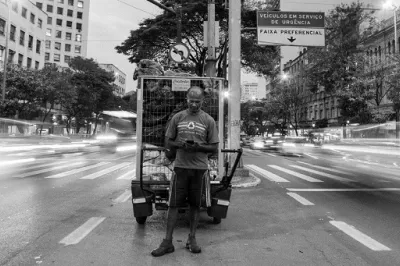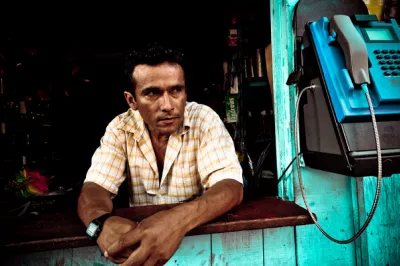Meanwhile in Brazil...Are We There Yet?
Over the past several months, we have taken a close look at the branchless banking industry in a few key countries. We start here by presenting our learnings from Brazil and share our summary note on the industry. We will continue in the coming weeks to look at several other markets, including Mexico, India and Pakistan.
The job of financial inclusion in Brazil is arguably done. Brazil’s banks have made it a global leader in branchless banking. The underlying retail payment infrastructure is in place. There are agent locations in almost every municipality. New agent management companies from around the world regularly visit more than 30 of their counterparts in Brazil to understand how the business works. And Brazil’s Bolsa Familia program, already successful in moving beyond G2P payments to credit and savings, is considered a global flagship.
And yet, financial inclusion in Brazil still has a long way to go. CGAP has studied the branchless banking market in Brazil over the past few months and has written a country note available here. In this blog series, we discuss some of the challenges identified in that note. We start the series here on the CGAP Technology Blog, but we will continue the conversation on a joint blog to be developed by Center for Microfinance Studies at FGV (Fundação Getulio Vargas).
1. Brazil’s agent business is changing and it is unclear how it will evolve. Until recently, agents were used mainly for bill payments. Now, both banks and agent companies want new products and services on the channel. Banks have awoken to opportunities in product offerings for the poor motivated in part by the huge demographic changes in the country (approximately 30 million people have surfaced out of poverty in 6 years). The business model is unclear, however, and new agent regulations recently passed will impact the model. New products via agents are also being offered as part of add-ons to G2P. While banks and agent companies determine what to do next via agents, lawsuits against them by the banking employees union may change things fundamentally. Bank unions want agents to be considered bank employees and get paid accordingly. Courts have already ruled in their favor and it is possible the results of those rulings will unfold in the coming year.
We will go into more depth on these issues in the next post and we will also pose some of these questions to Elvira Cruvinel, the head of the new Financial Inclusion Project at the Central Bank of Brazil.
2. Cell phone-based financial services are still new to Brazil but we can expect major developments in the next couple of years that could benefit Brazil’s poor. Today, there are more cell phones than people in Brazil. The state bank Caixa has already developed a mobile account. Banco Bradesco is now partnering with multiple mobile network operators to offer its mobile low-value account, Conta Bonus Celular. Oi’s new bank owners have ambitious plans for the service. Vivo has struck multiple partnerships to offer mobile financial services. And the Ministry of Social Development is studying the possibility of distributing government payments via mobile. Regulation needs to catch-up with these developments and open the room for non-banks to bring choice into the market for the poor.
3. Most importantly, Brazil’s urban poor still do not have access to adequate financial services and branchless banking and mobile banking could help. About 86% of the population is urban and some estimate tens of millions of people live in urban areas with low-quality financial services, if any at all. Financial needs of the urban poor are different than that of the rural poor. While they are more literate, their sources of income are not stable and they often face severe time poverty. For instance, in the two largest cities, São Paulo and Rio de Janeiro, research shows that fewer than 10% of households are part of Bolsa Familia and Bolsa’s subsidy is seen as too small of an incentive for urban families to keep children off the streets and in school.
We will end our series with a post on the financial needs of the urban poor in Brazil and how branchless banking could help. We will also explain how there is room for innovation in all three challenges we’ve discussed here.
What happens next with financial inclusion in Brazil is important not just for Brazil alone. Because Brazil is further along in financial inclusion via branchless banking than some of the other countries we work in, its challenges are a significant source of learning for those countries. A number of countries (including India) fashion their plans for financial inclusion and retail financial services based on what they see in Brazil. The donor and financial inclusion community focused on Africa and South Asia can draw significant insight from Brazil as it moves forward to meet the next generation of challenges in financial inclusion.
For more detailed information on branchless banking in Brazil, read our country note here.




Comments
I have been doing business in
I have been doing business in Brazil for over a dozen years and find Brazil's online banking to be the most secure and the most comprehensive I have encountered (versus U.S. banks). That said, the services are not intuitive. Also, branches are everywhere and do not seek to have been impacted yet by the use of online services. That's because there are still many actions that require one to go to the bank. And, the online services are not used by a large segment of lower income Brazilians.
Banks are finding other ways to provide services and increase transactions (and revenues). The largest bank in Brazil is Banco do Brasil, and it has also been trying to help small and medium enterprises (SMEs) to increase business and exports. It recently signed an agreement with the premiere B2B trade portal of Brazil, B2Brazil.com, to promote its companies abroad. The bank can then provide financial services on transactions.
Add new comment